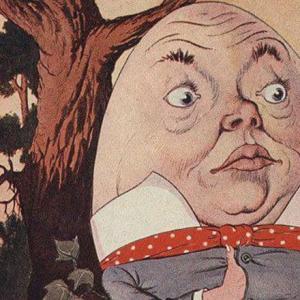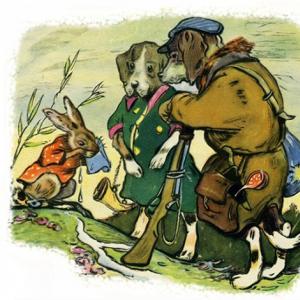Royal power and reformation in england struggle. Chapter III
The history of modern times. Crib Alekseev Viktor Sergeevich
12. REFORMATION IN ENGLAND
12. REFORMATION IN ENGLAND
The immediate reason for the beginning of the Reformation in England was the Pope's refusal to allow Henry VIII to divorce his first wife, Catherine of Aragon. And the reason for this was that she was the aunt of the German emperor Charles V. Since the pope did not want to aggravate relations with him at that moment, it is quite natural that he rejected the request of the English king. In response to the refusal of Pope Henry VIII, he issued an act of supremacy in 1534 (which is translated from latin means "supremacy"). The king was declared the head of the English church, as a result of which all Catholic dogmas and rituals were preserved, but the king took the place of the pope. The episcopate became the pillar of the absolute monarchy. In 1536 and 1539. Monasteries were closed and monastic property was confiscated: buildings, gold and silver utensils and, most importantly, vast monastic lands.
Sheep breeding and cloth production have long been the main occupations of the British and an important source of income for the royal treasury. The British called cloth "the most precious product of the kingdom." Wool prices rose continuously. Sheep grazing required extensive pastures. Therefore, the landowners seized the communal wastelands and pastures, and forbade the peasants to graze their cattle there. Dissatisfied with this, they different ways they tried to take away their plots from the peasants: they drove the peasants from the land by force, destroyed their houses, and demolished entire villages. The forcible eviction of peasants from the land was called fencing.
Having seized the peasant lands, the nobles bred huge flocks of sheep on them. They hired farm laborers to cultivate the fields and care for the livestock. The "new nobles" abandoned their knightly armor and sat down at the counting books. Some of them started weaving, tanning and other enterprises. Tens of thousands of people driven from the earth joined the ranks of vagabonds and beggars. The government issued cruel laws against them, which provided punishment for whipping, branding with a red-hot iron, and even the death penalty. Most of these people joined the ranks of the Reformation movement in England.
England achieved great success during the reign of the clever, cautious, well-educated Elizabeth I. Under her, the English Church, independent of Rome, was finally formed, which was called the Anglican Church. In 1559, when she ascended the throne, the organizational structure of the Church of England was established in forms that have largely survived to the present day. During these 30 years, many changes have taken place, but the British have always been of the opinion that their church is not new, but the same church that has existed in England for more than a thousand years; its reform was carried out to return to the model of the church presented in the New Testament. In support of this continuity, the British cite their doctrine, priesthood and liturgy.
But, despite this, nevertheless, as a result of the reform movement in England, a number of serious changes were carried out. The parishioners received the Bible in English, and the clergy began to teach them to regard it as the highest authority in matters of faith and life. The service was now conducted in the local language. The Church of England insisted on the independence of the national churches in internal affairs, on the right of churches to act at their discretion in relation to rituals and liturgical practice. The pope's jurisdictional claims to England were rejected. However, due to the ambiguous nature of its Reformation, the Church of England claims to be both Catholic and Protestant.
From the book of 100 great prophets and teachers the author Ryzhov Konstantin VladislavovichREFORMATION
From the book History of Germany. Volume 1. From the earliest times to the creation of the German Empire author Bonwetsch Bernd2. Reformation
From the book Politics: A History of Territorial Seizures. XV-XX centuries: Works the author Tarle Evgeny ViktorovichEssay ninth The class struggle in England and the resettlement to America. The attitude of the colonists to the metropolis. Confederation of New England. Indian tribes and Dutch colonists. Seizure of the territory of New Amsterdam. Louisiana. The agrarian question In the era of Walter Raleigh and in the coming
From the book of Grandfather's stories. The history of Scotland from ancient times to the Battle of Flodden in 1513. [with illustrations] by Scott WalterCHAPTER IV RULES OF MALCOLM CANMOR AND DAVID I - THE BATTLE UNDER THE BAND - THE SOURCES OF ENGLAND'S CLAIMS FOR DOMINATION IN SCOTLAND - MALCOLM IV CALLED THE GIRL - THE ORIGIN OF THE HERALDIC FIGHTERS OF THE NORTHERN
From the book Tsar of Terrible Russia the author Shambarov Valery Evgenievich8. HOW THE REFORMATION STARTED Well, now let's take a look at what was going on abroad at the time being described. The protracted wars over Italy have made life in this country not at all comfortable. The French invaded, the Spaniards, the cities passed from hand to hand, The rich tycoons tried
the author Zuev Yaroslav Viktorovich5.1. The Reformation It is believed that the beginning of the Reformation was laid by the German Martin Luther, although before him, of course, there were reproaches against the Catholic clergy, only for the sake of observing the covenants of Christ, but in fact mired in all grave problems. Luther's 95 Theses raised the question
From the book The Big Plan of the Apocalypse. Earth on the Threshold of the End of the World the author Zuev Yaroslav Viktorovich5.6. "The last love of the president", or the Reformation in England I must say that the ideas of the Reformation crossed the English Channel with the greatest ease. There were several good reasons for this. First, the influence of Italian banking capital in Britain was great in earlier times,
From the book Requests of the Flesh. Food and sex in people's lives the author Kirill ReznikovThe Reformation The Reformation was a consequence of the fall of the authority of the papacy and the awakening of the national consciousness of the peoples of Europe. In 1303, the French king Philip IV arrested the pope Boniface VIII and moved the residence of the popes to the city of Avignon on the Rhone. The papal throne returned in 1377
From the book The World History: in 6 volumes. Volume 3: The World in Early Modern Times the author The team of authorsREFORMATION The origins of the Renaissance and the Reformation were in many ways common. The humanist movement and the flourishing of Renaissance art responded to new cultural demands. But such issues as the liberation of the peoples of Europe from the spiritual dictatorship of Rome and
From the book Yiddish Civilization: The Rise and Decline of a Forgotten Nation author Krivachek Paul From the book From Ancient Times to the Creation of the German Empire author Bonwetsch Bernd2. Reformation
From the book History of Religions. Volume 1 the author Kryvelev Iosif AronovichREFORMATION IN SWITZERLAND, ENGLAND, FRANCE AND THE NETHERLANDS In state and political terms, Switzerland was a confederation of cantons, independent from the German princes and even from the Habsburg empire. Economically, the different cantons of the Confederation
From the book Chronology russian history... Russia and the world the author Anisimov Evgeny Viktorovich1533 Reformation in England King Henry VIII became the initiator of the Reformation on the island. The reason for the sharp turn of the eccentric king - at first the denouncer of Luther and the defender of the Catholic faith - to the Reformation was very prosaic - he wanted to divorce his annoying
From the book History of France in three volumes. T. 1 the author Skazkin Sergey Danilovich the authorII.6. Reformation
From the book The Baltics on the Fissures of International Rivalry. From the invasion of the Crusaders to the Peace of Tartu in 1920 the author Vorobieva Lyubov MikhailovnaReformation in Livonia Luther's teachings triumphed in Livonia as well. It found support among the German colonists, as it became the catalyst for a long-standing hostile relationship between the Catholic bishops and the order. We remember that Bishop Albert was forced to found
The 16th century in the history of England is the century of the reign of the Tudor dynasty. They were on the English throne from 1485 to 1603. The most important historical processes taking place in England during the Tudor era include the Reformation, the strengthening of royal power and the conquest of sea dominance by England. Despite the strengthening of the power of the English king in the 16th century, the regime of his rule can hardly be attributed to an absolute monarchy. The power of the king during this period has always been more or less limited by parliament. The Reformation also contributed to the strengthening of royal power. It is associated with the name of Henry VIII. The Pope's refusal to implement the divorce of the English king Henry VIII and the Spanish princess Catherine of Aragon became a formal reason for the beginning of the Reformation. In 1534, the English Parliament issued the Supremacy Act, according to which english king and his successors were proclaimed the head of the church. One of the prerequisites for the formation of England as a leading naval power was the defeat in 1588 of the Spanish Invincible Armada.
Reformation and royalty in 16th century England.
The era of Tudor rule (1485-1603) is characterized by three major processes: the Reformation, the strengthening of royal power and the conquest of naval domination.
Background
After graduation in 1453 Hundred Years War England was engulfed in internal strife - the so-called War of the Scarlet and White Rose. The clan of York and the clan of Lancaster fought for royal power with the support of their aristocratic clans. The war ended in 1485 when Henry Tudor became king, uniting Yorks and Lancaster by marriage. Henry pursued a consistent course to strengthen the royal power ().
Events
The reformation in England began at the behest of the king (and not at the initiative of the bottom), therefore it is called royal. The reformation of the church helped to strengthen the royal power. It took place simultaneously with the formation of absolutism.
The external reason for the beginning of the Reformation and the break with the Pope was a divorce Henry VIII Tudor with Catherine of Aragon and marriage to Anne Boleyn, which the Pope did not want to admit.
1534 g. - Parliament passed a law according to which the king and his successors become the head of the church in England. Three thousand monasteries were closed in the country. Church lands were secularized (declared as belonging to the king). The service is translated into english language... The king received the right to appoint bishops and the highest church official - the bishop of Canterbury. The reformed church was named Anglican.
1553-1558 - Mary the Bloody, daughter of a Spanish princess (Spain is the stronghold of Catholicism in Europe) pursues the policy of the Counter-Reformation. Restored Catholicism. In 1554, a commission was formed to combat heresy. Opponents of Catholicism were burned at the stake.
When the ideas of the Reformation began to penetrate the country, the king at first rejected them, but later his position changed, and the Reformation in England began at his will; therefore it is called royal. The reason for the start of reforms was the circumstances of the monarch's family life. The king was married to the Spaniard Catherine of Aragon, but did not have a son from this marriage - the heir to the throne. He decided to divorce and remarry the Englishwoman Anne Boleyn. For a divorce, the Pope's consent was required, but he refused, fearing the wrath of Catherine's powerful nephew, Emperor Charles V. Enraged, Henry VIII began to take action against the pope, deciding to use Luther's ideas. True, of them he accepted only that which could strengthen his power. The king decided to subjugate the English church and confiscate its vast holdings. Under his pressure, parliament in 1534 adopted the "Suprematism Act" (that is, the supremacy), proclaiming the monarch the supreme head of the English church. The monasteries were closed, and their lands passed into the hands of the king and his entourage. Anyone who did not approve of the king's divorce and the new church policy was persecuted. The despot king did not spare anyone. Even Thomas More, the famous humanist and Lord Chancellor of England, laid his head on the chopping block.

Fig. 2. Anna Boleyn
()The reformed church adopted Luther's idea of \u200b\u200b"justification by faith" and rejected some of the Catholic sacraments, but remained close to Catholic in the rest. The new faith, called the Anglican, quickly took root in England, although many remained secretly Catholics; there were also supporters of a deeper reform of the church.
Choosing a new faith brought important political benefits to the country : England led the European Protestants. But this inevitably made her an enemy of Catholic Spain.
The new faith was severely tested during the reign of the daughter of Henry VIII and Catherine of Aragon - Mary Tudor (Bloody). She restored Catholicism in the country and brutally cracked down on Protestants. But after her death, the daughter of Henry VIII and Anne Boleyn, Elizabeth I Tudor (1558-1603), ascended the throne, finally establishing the new faith. A supporter of the moderate Reformation, Elizabeth rejected the extremes of Catholicism and Calvinism and restored Anglicanism, seeking to avoid bloody religious strife.

Fig. 3. Elizabeth I
()The long reign of Elizabeth I was marked by important successes in economic development, strengthening of the state, and a brilliant flourishing of culture. Elizabeth was smart and well-educated, possessed acting skills, had no equal in the diplomatic game. And if in other countries, under absolutism, representative bodies lost their importance, then the British Parliament, which consisted of the House of Lords and the House of Commons, retained its influence. The leading role in it was played by the House of Commons, which was dominated by representatives of the bourgeoisie and the new nobility. They needed the support of the royal power, and up to a certain time they themselves supported it. Elizabeth relied on the nobility in her actions, but at the same time pursued a far-sighted policy of protectionism - patronizing the development of national production and trade. The production of goods, especially cloth, has grown significantly in the country. To sell them profitably, to buy cheap raw materials and necessary goods, the British sailed to all corners of the world. In order to reduce the risk of long-distance travel, they united in trading companies. So, the Moscow company traded with Russia, the East India - with South and Southeast Asia.
In the area of foreign policy Elizabeth tried to maneuver between the strongest powers of the then Europe - Spain and France. However, relations with Spain were quite tense, since the queen secretly supported the smuggling trade of English merchants with the Spanish colonies and the actions of pirates who attacked Spanish ships. The Spaniards, in turn, organized uprisings and conspiracies of Catholics in England, the loudest of which was a conspiracy involving the Scottish Queen Mary Stuart, who fled to England from the Reformation that began in Scotland. Since Mary was a relative and heiress of Elizabeth, her Catholic faith made her a dangerous weapon in the hands of Spain. Mary was involved in a Catholic conspiracy, it was discovered, the Scottish queen was executed by court order.
The Spanish king Philip II was indignant and in 1588 struck back. The Spaniards assembled a huge fleet - an armada - of 134 ships. The Spanish fleet was to land an 18,000-strong army in England. When the armada approached the shores of England, the Spanish admiral showed hesitation and lost the chance of success, while the British acted successfully. And then the Spanish fleet was destroyed by violent storms. The enemies of Spain were jubilant, christening the defeated armada "invincible." England was celebrating the victory. She defended her independence and was preparing to become a great maritime power.

Fig. 4. The defeat of the "Invincible Armada"
()List of references
1. Bulychev K. Secrets of the New Time. - M., 2005
2. Vedyushkin VA, Burin SN Universal history. History of Modern Times. 7th grade. - M., 2010
3. Konigsberger G. Europe of the early modern times. 1500-1789 - M., 2006
4. Soloviev S. Course of New History. - M., 2003
Homework
1. What successes did the English economy achieve in the 16th century?
2. What are the reasons for the beginning of the Reformation in England
3. What were the main directions of the domestic and foreign policy of Elizabeth I?
In England, the Reformation began much later than on the continent - during the reign Henry VIII, in the 30s of the XVI century. Reformation ideas in England began to take shape in the XIV century. The ideologist of the early English burgher Reformation was John Wyclef... Wyclef denied the piety of the papacy and demanded the secularization of the land.
In England XVI century. The reformation began from above, came from the king. The main goal the royal Reformation was the liberation from the Vatican and the direct subordination of the English church to the king. Important, if not the main thing, was the king's desire to secularize the monastic lands.
The English bourgeoisie was interested in a "cheap and simple" church. The rich church and monastery lands haunted the secular feudal lords. All this complex of reasons marked the beginning of the English Reformation.
The reason for the Reformation was the refusal of the Pope of Rome to dissolve the marriage of Henry VIII with Catherine of Aragon, which would allow the king to remarry with the maid of honor of the Queen Anne Boleyn.
Catherine of Aragon was the aunt of Charles V of Habsburg, a Catholic stronghold in Germany. Therefore, it is not surprising that dad was on her side, and the divorce was not sanctioned. The divorce of Henry VIII with Catherine of Aragon was formalized by the English parliament, after which Henry married Anne Boleyn. IN 1534 Henry VIII publishes "Act of Suprematism", by which the king is declared the head of the Church of England. Relations with the Vatican were decisively severed. The "act" of Henry VIII was not a manifestation of the struggle against Catholicism, it marked, first of all, the struggle with the pope. The "Act" specifically stipulated the inviolability of all Catholic dogmas and rituals. The head of the church changed - the king took the place of the pope. The Catholic episcopate remained the mainstay of the emerging monarchy in England at that time - abolutism. The New English Church, denying the supremacy of the pope, has already ceased to be absolutely Catholic, but has not yet become Protestant. It received the name Anglican, and Anglicanism, at first, took a middle position between Catholicism and Protestantism.
In 1536-39. in England monasteries are closed and monastic property confiscated. Precious ornaments are removed from churches. The secularization of church lands begins.
Henry VIII was associated with many English and European humanists - Thomas More, Erasmus of Rotterdam, Martin Luther and others. Luther's departure from the principles of humanism and the transition to Reformation positions gave Erasmus of Rotterdam, who, like many humanists, did not accept the Reformation, a reason for a bitter aphorism : just as a hen incubates chickens, humanism incubated the Reformation. Henry VIII and Thomas More strongly opposed Luther's new principles, and a lengthy theological controversy began. Thomas More owns a number of theological works directed against the Reformation.
Lands secularized by the clergy did not last long in the royal treasury; they soon became the subject of trade and speculation. Some of them were presented to the royal favorites. Nevertheless, the secularization of church lands had enormous social consequences. These lands were acquired by new owners - people from the middle and small nobility and the bourgeoisie, and thus a new social stratum of English society took shape.
The new owners of secularized lands, in order to increase their incomes, deprived the peasants of their allotments, increased rent - and to such an extent that the owners themselves were forced to leave their possessions.
Under Edward VI, the Church of England came closer to Protestantism (recognition of the dogma of predestination). But at this time, serious changes are taking place in the state and political life of England. IN 1553 d. the daughter of Henry VIII and Catherine of Aragon, a Catholic, ascends to the throne Mary Tudor... Her husband was the Spanish king Philip II. Catholic reaction begins in England. The Queen restored Catholicism. A bloody struggle began with the Protestants and their persecution. Mary Tudor was nicknamed the Bloody Mary. However, the queen did not dare to return the lands and other property secularized under Henry VIII to the monasteries.
Mary Tudor did not rule for long, and after her death power in England passed to the daughter of Henry VIII and Anne Boleyn, Elizabeth I. The reign of Elizabeth Tudor (1558-1603) was the heyday of England. In history, this period was called the "Age of Elizabeth". Another dynasty - the Stuarts, represented by Mary Stuart - claimed the English royal throne. The battle of the clever and domineering Elizabeth with the beautiful Mary Stuart, the former French queen, ended in victory for the Tudors. Mary was captured and executed by order of Queen Elizabeth.
In order to meet the interests of the bourgeoisie, Elizabeth is restoring Protestantism in a moderate Anglican form. In 1559 Parliament confirms royal supremacy over the English Church. The Queen appoints bishops and leaves them land holdings, and also retains the right to sit in Parliament. Elizabeth's reign was the flowering of classical absolutism in England.
IN 1571 The Anglican Creed was developed, consisting of 39 articles. Along with some Catholic dogmas, it also contained the Calvinist dogma of absolute predestination, as well as the dogma of Holy Scripture as the only source of faith. The Catholic doctrine of the Church's one-saving power was recognized. Uniformity was introduced in worship in English according to a special service book approved by the government.
At the end of the XVI century. a number of rather harsh laws were issued against Catholics. For example, severe punishments were imposed for refusal to recognize the supremacy of royal power over the English church.
As in a number of other countries, it was forbidden for the Jesuits to appear in England.
By the end of the XVI century. the Anglican Church becomes national and turns into a pillar of absolutism. As before, the church is headed by a king, to whom the clergy are subordinate as part of the state apparatus of the absolute monarchy.
The anti-absolutist sentiments of the growing bourgeoisie in England take on a religious-church form puritanism... The Puritans break with the mainstream Anglican Church and create their own church communities.
By the end of the XVI century. In English Puritanism, two trends emerged: Presbyterian (the big bourgeoisie and nobility) and Independent (petty bourgeoisie, gentry and peasantry). Presbyterians tried to establish a single Calvinist church in England. The Independents demanded that each community of believers be independent and self-governing. They sought to free the church from the tutelage of the king and become completely independent. In the XVII century. the Independent Puritans combined religion with politics. During the bourgeois revolution, organized by them, led by their leader Cromwell, the English king Charles I (1649) was executed.
Elizabeth's government persecuted the Puritans, but the process was irreversible, and the number of Puritans increased. The Reformation movement in England was gaining momentum more and more. This was evidenced by the deepening contradictions between the bourgeoisie and absolutism.
The beginning of the Reformation in England is associated with the name of the English king Henry VIII (1509-1547), who turned into one of the most fierce opponents of the papacy. The "parliament of the Reformation" that sat with him adopted whole line laws that completely transformed the English church and took it out of the rule of Rome. Was of the utmost importance Suprematism Act(supremacy), proclaiming the king the head of the English Church-vi.
The reformation in England became irreversible after the accession to the throne of the queen Elizabeth in 1559. At the beginning of her reign, Parliament confirmed the supremacy of the crown in the affairs of the church and passed the Unification Act, according to which all Anglicans were obliged to perform divine services in accordance with the rules of the reformed church.
Anglican Church
The renovated church was named anglican... She occupied an intermediate position between Catholicism and Protestantism. Being completely independent from Rome and having switched from Latin to English, the Anglican Church largely retained Catholic dogma and church structure. Preserved, in particular, the leading role of bishops in the church organization, in connection with which the Church of England is called episcopal.
Closure of monasteries
In England, thousands of monasteries were closed, which owned almost a quarter of all cultivated land in the country. This was the largest redistribution of property in the new history of England, with enormous social consequences. Thus, the Re-formation has become a powerful factor in the transformation of the entire English society.
Spreading literacy
The most important consequence of the Reformation in England was the massive spread of literacy. The Bible was translated into English, and since the English at that time had practically no other books, Scripture became their main reading. Preface to english translation The Bible encouraged believers to independently study the Word of God. Material from the site
Puritans
Since the Anglican Church retained many elements of Catholicism, a movement arose in England under the influence of Calvinism. puritan... Their name comes from english wordmeaning "pure", since the Puritans demanded a complete cleansing of their faith from the Catholic heritage. Puritanism will be destined to play huge role both in the fate of their country and in the history of British
General history test, topic " Royalty and the Reformation in England "
7th grade
Part 1
- In what year was the law passed in England declaring the king the head of the church?
A. 1532 B. 1534 C. 1521 H. 1558
2 ... The Reformation in England was carried out:
A. at the request of the people - "from below"
B. by the will of the king - "from above"
V. by the will of the king - "from above" and the demand of the people - "from below"
G. by the will of the pope
3 . Who helped Henry VIII to carry out the Reformation?
A. Martin Luther
B. Jean Calvin
W. Thomas More
G. Thomas Cromwell
4. Queen Mary received a nickname among the people:
A. Magnanimous
B. Kind
B. Catholic
G. Bloody
5. The reign of Elizabeth I is called:
A. "golden age"
B. "Time of Troubles"
In the time of the counter-reformation
G. reformation
6. The main direction of the domestic policy of Elizabeth I
A. strengthening the integrity of the country, avoiding strife and unrest
B. strengthening the power of parliament
B. Strengthening the Catholic Religion
D. Strengthening the Teachings of John Calvin
7. In what year George Stephenson built the world's first railroad in England?
A. 1807 B. 1815 C. 1825 H. 1835
8 . In what year and for what purpose was the Invincible Armada equipped?
A. 1532, conquest of the Netherlands
B. 1825, conquest of France
B. 1568, conquest of Portugal
G. 1588, conquest of England
9. The Tenants' Law passed under Elizabeth I
A. allowed to provide assistance at home only to the sick and the elderly
B. allowed householders to evict tenants who owe rent
V. allowed the householders to send the tenants who owe their rent to prison
G. allowed householders who owe rent to tenants to make them work for free
10. Reign of Elizabeth I
A. 1858 - 1603
B. 1853 - 1858
B. 1856 - 1868
G 1836 - 1856
II. Part
1 .Set the correspondence between the elements of the left and right columns. One element of the left column corresponds to one element of the right
the date | Document |
| A. reign of Mary the Catholic |






